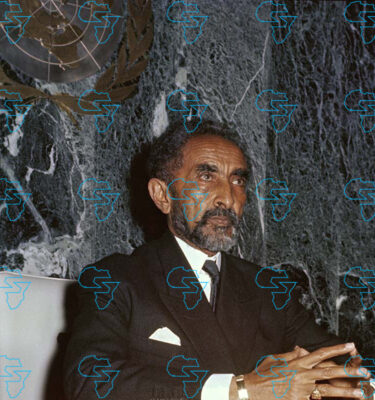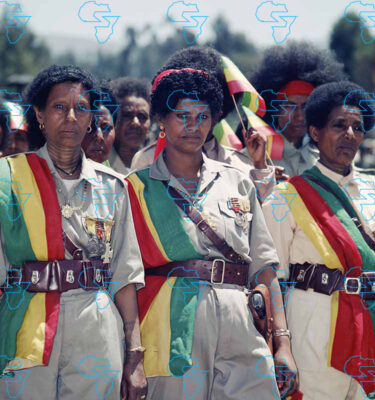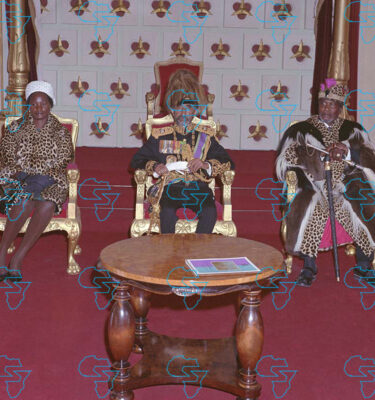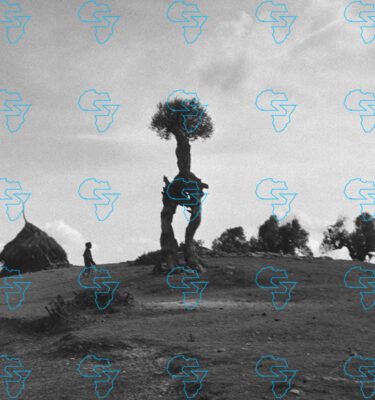
“We are familiar with England’s permanent opportunism.”
(Jean-Yves Le Drian, foreign minister of France)
Ever since TPLF (Tigre People Liberation Front) was removed from the seat of power in Addis Ababa and was relegated to and confined in an ethnic enclave of its own making (Tigray), the BBC has been persistently accusing the the Amhara of ethnically cleansing Tigrayans, Amnesty International has been continually producing “comprehensive reports” of Tigrayan “testimonials” to corroborate BBC’s accusations, and the The Economist has been regularly publishing articles “conclusively proving” BBC’s accusations, the English trio acting as both judge and jury to incessantly vilify the Amhara.
- “On the morning of 10 April, the Amhara militias dug up the four mass gravesin the St. Abune Aregawi Church” (BBC, May 7, 2022).
- “Tigrayans in the disputed Western Tigray Zone of Ethiopia have experienced a relentless campaign of ethnic cleansing by security forces from the neighboring Amhara region and their allies. The campaign of killings, rape, mass detentions, and forcible transfers amounts to war crimes and crimes against humanity.” (Amnesty International, April 6, 2022)
- “During the course of the Tigray conflict the Amhara militia sized – and ethnically cleansed– large parts of western and southern Tigray” (The Economist, October 27, 2024)
BBC’s accusations of ethnic cleansing of Tigrayans by the Amhara are, by its own admission, based on “unconfirmed reports”, if not on hearsay and rumors. No wonder why these accusations are often ridiculous, if not outright idiotic. For instance, when the BBC reported that Tigrayan mass graves were dug up in St. Abune Aregawi Church, it didn’t realize it was exposing its own lie, giving credence to the adage “a lie always contains the truth that will expose it.” The BBC was effectively saying that perpetrators of the crime were so humane, so compassionate, that, after ethnically massacring Tigrayans, they didn’t dump their corpses in a ditch or left them for hyenas, as ethnic murderers normally do, but buried them, of all places, in the compound of a church named after the most revered patron saint of Tigrayans. Nothing can be more nonsensical.
As for the Economist, what makes its latest accusation (October 27, 2024) of ethnic cleansing of Tigrayans by the Amhara so cruel is that it was published only a few days after hundreds of Amharas were slaughtered in Gojjam by Abiy Ahmed’s drones, including farmers in a field and children in a health center. Apparently, the editors of the Economist derive immense sadistic pleasure from rubbing salt on Amhara wounds.
Like the accusations of BBC, Amnesty International’s accusations of war crimes and crimes against humanity supposedly committed by the Amhara are based on “unconfirmed reports”. However, when Amnesty International is presented with fully confirmed, well-documented, video-supported, irrefutable evidence of war crimes and crimes against humanity committed on the Amhara by both TPLF and OLF, the most it does is offer a lip service, that is, if it does not ignore the crimes completely.
On rare occasions, Amnesty International reports on irrefutable war crimes and crimes against humanity committed on the Amhara, only because the crimes are too conspicuous to ignore. However, it does so only after it stayed deafeningly silent long enough for the crimes to achieve their intended objectives. Even then, its accusations are mute, especially when compared to its vehement and frequent accusations of unconfirmed crimes supposedly committed by the Amhara.
For instance, Amnesty International waited for nearly two years before meekly asking Abiy Ahmed to end his “arbitrary mass detention of thousands in the Amhara region”, although Abiy Ahmed has been doing so in full view of the world and with full support of the English government even before (way before) he declared a state of emergency in Amhara region on August 4, 2023.
“Over the past five years, arbitrary mass detentions have been used as political tools to silence peaceful decent, often under the guise of sweeping state emergency laws” (Amnesty International, November 6, 2024)
OLF (Oromo Liberation Front) has totally cleansed the Amhara from several regions in Wollega (western Ethiopia). Suffice to mention the Tole Massacre of June 2022, whereby machete wielding OLF terrorists nicknamed Shene (“the fifth column”) viciously slaughtered thousands of Amhara women and children in a single day, in less than 24 hours. However, even though this vicious Tole Massacre was recorded and widely disseminated by the perpetrators themselves, all Amnesty International asked was for the massacre to be investigated by Abiy Ahmed’s government, knowing full well that Abiy Ahmed’s government is nothing but an anti-Amhara OLF government, that Abiy Ahmed is the enabler-in-chief of the Amhara massacre and ethnic cleansing, that Abiy Ahmed once publicly threatened to “slaughter hundreds of thousands in a single night” if his OLF government is threatened even slightly, that Shene is nothing but a special branch of OLF army tasked with cleansing the Amhara from the so-called Oromia region, and that this Shene is armed to the teeth and fully controlled by none other than Abiy Ahmed himself.
“The Ethiopian authorities must urgently launch an impartial investigation into the summary killing of over 400 Amhara residents of Tole Kebele in Oromia region on 18, June” (Amnesty International, June 21, 2022)
As for TPLF, Meles Zenawi’s TPLF-lead, anti-Amhara, ethnocentric government has publicly admitted in its own Parliament that it could not account for the loss of 2.5 million Amharas in the Population and Housing Census of 2007. Since TPLF is well known for manipulating data to over/under report numbers as its sees fit, the actual loss in Amhara population is believed to be at least double the admitted loss (about five million) which is more than the entire population of Tigray proper. However, even the admitted loss of 2.5 million Amhara would make the genocide of Amhara by TPLF the worst genocide the world has ever seen, next only to the holocaust, definitely much worse than the Rwandan genocide. No wonder why the TPLF flag is as painful a reminder to Amharas as the swastika is to Jews.
In effect, Meles Zenawi was the Hitler of TPLF dead set on delivering “the final solution to the Amhara question”, the 1976 TPLF manifesto being his Mein Kampf whereby his “final solution to the Amhara question” was clearly detailed. Moreover, the Agazi (the notorious TPLF federal police) was Mele’s Zenawi’s Schutzstaffel (SS), his Lebensraum being the huge, fertile lands in the Amhara provinces of Gonder and Wello, which must be annexed and demographically engineered if the future Greater Tigray Republic is to have any meaningful chance of being economically viable.
There are no better proofs for the scope and severity of Amhara’s persecution under Meles Zenawi’s TPLF-lead, anti-Amhara, ethnocentric government than the Amhara regions of Wolkait and Raya which were, respectively, renamed “Western Tigray” and “Southern Tigray” after annexation by TPLF. Pre-TPLF, these regions were indisputable parts of the Amhara provinces of Gonder and Wollo, and the Amhara were by far the largest majority in the regions. During TPLF rule, the indigenous Amhara population of these regions were ethnically cleansed to settle TPLF combatants so much so that (even after TPLF was removed from power) Tigrayans continue to claim the regions as integral parts of Tigray, basing their claim on TPLF engineered demography. Not surprisingly, the anti-Amhara English government and English mainstream media fully concur with TPLF engineered demography and refer to Wolkait and Raya not as Amhara lands, and not even as disputed lands, but as indisputable western and southern parts of Tigray now occupied by “security forces from neighboring Amhara region”.
“People belonging to security forces from neighboring Amhara region, which are occupying western Tigray, have been identified as digging up fresh mass graves, exhuming hundreds of bodies, burning them and then transporting what remains out of the region, the eyewitnesses said in telephone interviews” (BBC, May 7, 2022).
When Meles Zenawi’s Schutzstaffel (SS) (that is, TPLF federal police well known as the Agazi) openly murdered more than two hundred Addis Ababa protestors (mostly Amharas) following the highly disputed May 2005 election, the English government and English mainstream media blamed the massacre on “lumpen” protestors and, thanking Meles Zenawi for “quickly putting the protest under control”, funneled additional millions for “additional training” of the SS. These are the same English government and English mainstream media which are now incessantly accusing the Amhara Fano of ethnically cleansing Tigrayans, based only on “unconfirmed reports”.
Despite, rather because, Meles Zenawi was the Hitler of TPLF responsible for the Ahmara holocaust, he was the darling of English governmental and non-governmental institutions as well as English mainstream media. For instance, Herr Zenawi (rather Der Zenawi) was hailed by Tony Blair (a former English prime minister) as one of, if not the best of, “Africa’s new generation of leaders the west can do business with” and, as as such, was made to represent the entire continent of Africa at numerous high profile events, such as G7 meetings and climate conferences.
After all, Meles Zenawi’s TPLF-lead, anti-Amhara, ethnocentric government was formed in 1991 after TPLF entered a power-sharing agreement with OLF (Oromo Liberation Front) in the so-called “London Conference” – a “peace conference” excluding the Amhara arranged by none other than the English government. Besides, TPLF grew overnight from a group of few bandits to a rebel army of tens of thousands only after the English government of Margarett Thatcher divested aid meant to the victims of the 1984-85 famine directly to TPLF rebels.
Thatcher’s comical reason for directly or indirectly (under the guise of humanitarian aid) funding TPLF to overthrow the Derg (Mengistu’s military government) was that the Derg was communist, even though she very well knew TPLF was more so than the Derg, TPLF being an Albanian style, Enver Hoxha worshipping diehard communist.
For Thatcher, communism was but only a pretext. Thatcher’s real reason for supporting TPLF over the Derg was that the Derg government was perceived by English white supremacists to be what they prefer to call an “Amhara government”, an anti-colonialist, black nationalist government, opposing and resisting all forms of white domination with all its might (not only in Ethiopia but throughout Africa), a government which armed Umkhonto we Sizwe, the military wing of ANC (African National Congress), and trained Nelson Mandela to be its commander-in-chief.
Speaking of apartheid South Africa, Thatcher’s reason for vehemently opposing sanctions on apartheid South Africa (in which English colonialists control most of the economy), was sanctions would only hurt blacks.
“(Sanctions on apartheid South Africa are) the way of poverty, starvation and destroying the hopes of the very people whom you wish to help” (Margaret Thatcher)
“(Sanctions on apartheid South Africa would) feed white consciences outside South Africa, not black bellies within it” (John Major, foreign minister under Margaret Thatcher).
On the contrary, when it comes to Russia (which is now fighting to end English hegemony once and for all), Thatcher’s English establishment is the foremost proponent of all encompassing, unprecedented sanctions on Russia, arguing that Russians will revolt against President Putin only if they are made to suffer severely under severe sanctions. Indeed, English hypocrisy is legendary.
The hypocritical English white supremacist likes to please itself by shedding crocodile tears for Africans, conveniently forgetting that the principal cause of Africa’s predicament was English colonialism driven by none other than the English white supremacist himself. But again, no one, absolutely no one in the whole world is more adept at shedding crocodile tears, pretension, and treachery than the permanently opportunistic English white supremacist. He is now shedding crocodile tears for Tigrayans, not because he cares one iota for Tigrayans but because he found it to be as an excellent opportunity to vilify the Amhara. He is using his governmental and non-governmental institutions as well as his mainstream media to constantly accuse the Amhara of ethnically cleansing Tigrayans, knowing full well that it was the Amhara who were ethnically cleansed by Tigrayans, by TPLF to be more precise, and not the other way round.
After nearly three decades in power, TPLF, the darling of English governmental and non-governmental institutions as well as English mainstream media, lost control of the federal government of Ethiopia in 2018, and was relegated to Tigray, thanks to the continual opposition and occasional revolt of the Amhara against degradation, marginalization, and persecution by TPLF. It then tried to re-control the federal government in 2019 after regrouping in Tigray, attacking the Northern Command in an operation it dubbed blitzkrieg (lightening attack), massacring almost all the Northern Command officers of Amhara origin, and then marching towards Addis Ababa.
However, TPLF was brought to a dead stop and crushingly defeated by Amhara regional forces in the northern Amhara region, and was slowly, but surely, passing into oblivion. Nevertheless, it was resuscitated from its deathbed by the so-called “Pretoria Agreement” of 2022 in which the Amhara were purposely excluded. The English government (in conjunction with the US government) was the main force behind the agreement, the crux of the agreement being to save TPLF from its impending demise and align it with the OLF. The plan is for the TPLF-OLF duo to work in unison to keep the Amhara in check, if not to cleanse the Amhara altogether.
Therefore, the big question (whose answer is already alluded to) is the following. Why do English governmental and non-governmental institutions as well as English mainstream media incessantly vilify the Amhara and use flimsy evidence to accuse the Amhara of ethnic cleansing, while giving lip service, if not ignoring completely, ethnic cleansing of Amhara by TPLF and OLF supported by irrefutable evidence? Why do they want the Amhara to be totally wiped out from Ethiopia or, at least, to be ethnically cleansed in Ethiopia to the extent that they become an insignificant minority playing insignificant role in Ethiopian affairs. In short, what is the English white supremacist’s beef with the Amhara of Ethiopia and what he prefers to call “Amhara Ethiopia”, the anti-colonialist, black nationalist Ethiopia that dealt a crushing blow to white colonialists at Adwa? The clearest answer to this question was given by none other than the white supremacist, Trump-admiring former prime minister of England, Boris Johnson.
“The best fate for Africa would be if the old colonial powers, or their citizens, scrambled once again in her direction; on the understanding that this time they will not be asked to feel guilty. The continent may be a blot, but it is not a blot upon our conscience … The problem is not that we were once in charge, but that we are not in charge anymore.” (Boris Johnson, former prime minister of England)
Boris Johnson’s England (England because Scotland, Wales, and Northern Ireland are mere vassals, if not outright colonies of England) was exclusively built on colonialism and slavery, each and every aspect of England or attributed to England being a clear, undeniable testament of unparalleled colonial robbery and appropriation. As such, England has been in a state of decline ever since it began to lose its vast colonies and the Sun started to set on its empire. It is still affluent not because it is industrious or innovative, but solely because it is the prime beneficiary of the so-called “rules-based international order” which is nothing but a neocolonial order for controlling and exploiting the non-western world under the guise of freedom, democracy, and human right, a set of rules purposely ill-defined for convenient interpretation, and to be completely ignored or trampled upon on when necessary, à la Gaza (Palestine).
However, now that this neo-colonial order on which England is helplessly dependent is being seriously challenged by the Global South (principally China and Russia), and may very well be completely dismantled in the near future, England is in dire straits and may soon be cut to its proper size and become practically, if not completely, irrelevant in world affairs, be it political or economic.
Therefore, when Boris Johnson talks about “the best fate for Africa”, he is actually talking about “the best fate for England”. He is openly admitting the obvious fact that as England was built by colonialism and slavery, it can be sustained only by colonialism and slavery, in one form or another. And, according to Johnson, the one and only way to stop England from nose-diving to “third world” status in matter of few decades is by turning the clock back and recolonizing Africa. This, then, is Johnson’s version of make Great Britain great again, akin to Trump’s make America great again (MAGA), explaining why Johnson is an admirer, rather a fan, of Trump.
However, if Johnson is to realize his dream of making Great Britain great again by recolonizing Africa, first and foremost he has to deal with Ethiopia, the one and only African country which was not colonized in the first place. Because of its unique role in the decolonization of Africa, not to mention its potential to be one of the strongest, if not the strongest, countries in Black Africa, Ethiopia is so critical for Black Africa that one can safely say Black Africa goes as Ethiopia goes.
If the seat of the African Union (AU) is seen as hopeless, the entire continent can be easily depicted as hopeless, and “The Economist,” that quintessential mouthpiece of English neocolonialists, would be justified in calling Africa “The Hopeless Continent”. The English white supremacist will then use this “hopelessness” excuse to re-scramble Africa, because, to paraphrase Boris Johnson, “Africa’s problem is not that the English were once in charge, but they are not in charge anymore.” On the contrary, if Ethiopia is strong and prosperous, it will spur the whole Black Africa to be strong and prosperous, posing a serious threat to Boris Johnson’s dream of recolonizing Africa.
Therefore, John’s dream can be realized only by making Ethiopia hopelessly weak. However, the battle of Adwa has clearly demonstrated that no external power can weaken ethnically harmonious, united, patriotic Ethiopia from without, and the English white supremacist knows this fact all too well.
On the other hand, the social fabric of Ethiopia is its Achilles heel and can be used to weaken Ethiopia from within. This social fabric consists of more than three major nationalities and more than seventy not so major nationalities, and is woven by the Amhara who are the most integrated of all Ethiopian nationalities. Unlike other nationalities of Ethiopia, the Amhara identify themselves first and foremost, not as Amharas, but as Ethiopians so much so that anti-Amhara tribalists have found it easy to question, if not to totally deny, the very existence of the Amhara. Ethiopian nationalism has become synonymous with Amhara nationalism for the sole reason that the Amhara are by far its largest and its most ardent adherents.
In an ideal, well-meaning world, the social fabric of Ethiopia would make it a beautifully diversified museum of people with beautifully diversified culture. However, in the real world of colonialist and neo-colonialist vultures, it is vulnerability. The permanently opportunistic English white supremacist (who can conquer only the divided and who has no equal at dividing along fault lines and weakest links) is now exploiting this vulnerability of Ethiopia to the fullest, as other external enemies of Ethiopia have done or have tried to do for centuries.
The clearest prescription to exploit the diversified social fabric of Ethiopia for weakening Ethiopia from within by flaming anti-Amhara tribalism was written in 1935 (the year Italy invaded Ethiopia) in a small book titled “Abessinien: Die Schwarz Gefhar” (Abyssinia: The Black Danger). The writer was Roman von Prochazka, a Nazi Baron posted as Austrian consul in Addis Ababa for two years until his expulsion in 1934 for activities “incompatible with his diplomatic office”.
“The numerous tribes who inhabit the Ethiopian state are being forcibly kept from European colonialism by Abyssinian rulers whose aim is to act as champions of all black people so as to attack and destroy Western culture.” (Roman Prochazka, Abyssinia: The Powder Barrel, Vienna, 1935)
What Prochazka meant by “Abyssinian rules whose aim is to act as champions of all black people” is Amhara rulers of Ethiopia epitomized by Emperor Menelik who insured the very survival of Ethiopia by crushingly defeating European colonialists at Adwa, paving the way for decolonization of the entire continent of Africa, initiating Pan-Africanism, and laying the very foundation of black pride and black nationalism for blacks all over the world, explaining why the flags of several African countries are variants of the green-yellow-red flag of Ethiopia.
As detailed in his book, Prochazka was so unhappy with his stay in Ethiopia for the simple reason that the Amhara didn’t accord him royal treatment just because he was white. To inflame white hatred of the Amhara, he even went as far as accusing the Amhara of imagining “themselves to be infinitely superior to the white race”, that is, unlike non-Amhara Ethiopians who are “being forcibly kept from European colonialism” by Amhara rulers of Ethiopia.
“It is hardly possible to imagine a more unhappy situation of a white man than to have to live under the oppression of an Abyssinian grandee. The prevalence of this contemptuous invective is characteristic of the mentality and attitude of the natives who imagine themselves to be infinitely superior to the white race.” (Roman Prochazka, Abyssinia: The Powder Barrel, Vienna, 1935)
Taking their cue from Prochazka, anti-Amhara western media and statesmen often refer to the pre-1991 (pre-Meles Zenawi) Ethiopia as “Amhara Ethiopia”. Suffice to quote Mr. Herman Cohen (a former U.S. Assistant Secretary of State for African Affairs) who, barely a day after Amhara region leaders were viciously murdered by Abi Ahmed in Bahr Dar, twitted:
”Failed coup in #Ethiopia’s Amhara state was an attempt by ethnic nationalists to restore Amhara hegemony over all of Ethiopia that existed for several centuries prior to 1991. That dream is now permanently dead.” (Herman Cohen, Twitter, June 24, 2019).
Incidentally, this was the very same Herman Cohen who played a critical role in TPLF’s assumption of power in 1991 by playing deceitful role in the so-called “London Peace Talks” whereby he convinced the Ethiopian military command to declare ceasefire “for the sake of peace” while urging TPLF rebels to fight with all their might to enter the capital (Addis Ababa) and control it as quickly as possible. In effect, the “Pretoria Agreement” of 2022 was nothing but a replica of the “London Peace Talks” of 1991, both concocted by the English white supremacist to impose TPLF and OLF on the Amhara.
According to Mr. Cohen, Ethiopia was “Amhara Ethiopia” for several centuries until the advent of TPLF in 1991. In other words, for Mr. Cohen, pre-1991 Ethiopia was of the Amhara, by the Amhara, for the Amhara, for this is what hegemony basically means. However, Mr. Cohen or no one else can deny the irrefutable fact that most of the highest government and military officials of this “Amhara Ethiopia” were partially, if not totally, non-Amhara, and the Amhara were, at least economically, the least beneficiaries of this “Amhara Ethiopia”, the so-called “Amhara region” being the most impoverished of all major regions in Ethiopia. Mr. Cohen was simply parroting the fake narration of Tigre and Oromo “liberation fronts” which were fostered, if not spawned, by the anti-Amhara west in accordance with Prochazka’s prescription of weakening Ethiopia from within by sowing ethnic discord.
For instance, the rallying cry of OLF is ”Ethiopia out of Oromia” (meaning “Amhara Ethiopia” out of Oromia), Oromia being a Bantustan region created by TPLF and OLF exclusively for Oromos and Oromos only, even though Amharas are by far the largest majority in virtually all big cities and towns of the region (such as Debre Zeit, Nazret, Assela, Shashemene, and Zeway). No wonder why OLF, with full tacit, if not explicit, support of the west, and in full view of the whole world, started to cleanse Amhara from Oromia the day after it assumed full control of Ethiopia’s government in 2018.
Again, according to Mr. Cohen, since pre-1991 Ethiopia was under Amhara hegemony, the anti-colonialist history of pre-1991 Ethiopia belongs to the Amhara and Amhara only. Therefore, were Ethiopia not “Amhara Ethiopia” but “Tigre Ethiopia” or “Oromo Ethiopia”, it would have been happy to be colonized by Europeans rather than pay immense sacrifice to keep European colonizers at bay. This is exactly what Prochazka meant when he asserted that, unlike the Amhara who “imagine themselves to be infinitely superior to the white race”, other nationalities in Ethiopia “are being forcibly kept from European colonialism by Amhara rulers.”
Unfortunately, there is some element of truth to this assertion of Prochazka. The second Italo-Ethiopian war (1935-1937) was partially successful for Mussolini, partly because prominent Tigre and Oromo nobilities (like Dejazmach Haile Selassie Gugsa of Tigre, and Jimma Aba Jiffar of Keffa) sided with Italian colonizers, preferring to be colonized by Italy, going as far as equating colonization with civilization.
Evidently, non-Amhara tribalists who “are being forcibly kept from European colonialism by Amhara rulers” are not careful about what they wish for, because it may come true. If the now declining Great Britain is to recolonize Africa to realizing its dream of becoming great again, it has to ethnically cleanse Africans as it has so done so when it colonized Africa in the first place. If non-nuclear England massacred tens of thousands of Africans in a single African country (Kenya) during a single anti-colonialist rebellion (the Mau Mau rebellion), it is frightening even to think what a nuclear-armed England would do to the whole of Africa if, to paraphrase Boris Johnson, “Englishmen scrambled once again in her direction without being asked to feel guilty.”
Therefore, if the English white supremacist employs his colonial institutions and mainstream media to constantly wail about the suffering of Tigrayans in Ethiopia, it is not because he cares one iota for Tigrayans, but only because he found it to be an excellent pretext to incessantly vilify the Amhara, for the sole reason that the Amhara are the very embodiment of what the English white supremacist prefers to call “Amhara Ethiopia”, the anti-colonialist, black nationalist, ethnically harmonious, unified Ethiopia the Whiteman dreads.
As if standing fully behind the ethnic cleansing of the Amhara by TPLF and OLF is not enough, the English white supremacist is itching to deploy NATO jets to bomb the hell out of the Amhara. To this end, his pretext would be protecting Tigrayans from ethnic cleansing by the Amhara, and his justification would be his own self-serving “rules-based international order” – rules he himself tramples when he sees fit. By incessantly vilifying the Amhara solely based on “unconfirmed reports” and “testimonials”, English governmental and non-governmental institutions as well as English mainstream media (the BBC, The Economist, Amnesty International, and their likes) are doing nothing but preparing the ground, fabricating the raison raison d’etre for that eventuality.
Finally, my token advice for the Amhara of Ethiopia. With respect of relations between countries, the adage is “there are no permanent enemies, and no permanent friends, only permanent interests.” However, this adage doesn’t work for England and what the English white supremacist prefers to call “Amhara Ethiopia”, that is Ethiopia lead by black nationalists like Emperor Tedros and Emperor Menelik and not by Uncle Toms like Meles Zenawi and Abiy Ahmed. As long as the English white supremacist reigns supreme in England (and there is no end in sight for this reign), England will remain the permanent enemy of “Amhara Ethiopia”, and the prime one at that.
Therefore, when the Amhara, hand-in-hand with other patriotic Ethiopians, overcome the current debacle, as they will surely do, and deal with Tigre and Oromo tribalists once and for all to re-establish anti-colonialist, black nationalist, ethnically harmonious Ethiopia, they should make sure that they permanently sever all kinds of relationships – above all diplomatic relationships – with white supremacist England.
Most of the major problems of Ethiopia, especially civil war (and the concomitant famine and poverty) can be traced back to England, directly or indirectly, fully or partially. Ethiopia gains nothing but loses everything by having any kind of relationship with England, especially now that England is rapidly declining and will soon be cut to its proper size to become practically irrelevant in practically all world affairs.
The permanently opportunistic, inherently mean-spirited, despicably treacherous English white supremacist is a deadly cancer to nature and humanity, directly or indirectly responsible for most, if not for all, major human and environmental ills in Africa and the rest of the world. Therefore, ridding the English white supremacist and all his institutions for good is as good as ridding an opportunistically and continually mutating deadly virus once and for all.
Mesfin Arega
.
.
.
#Ethiopia #English #white #supremacist #incessant #vilification #Amhara #Habesha #Latest #Ethiopian #News #InDepth #Analysis
Source link











